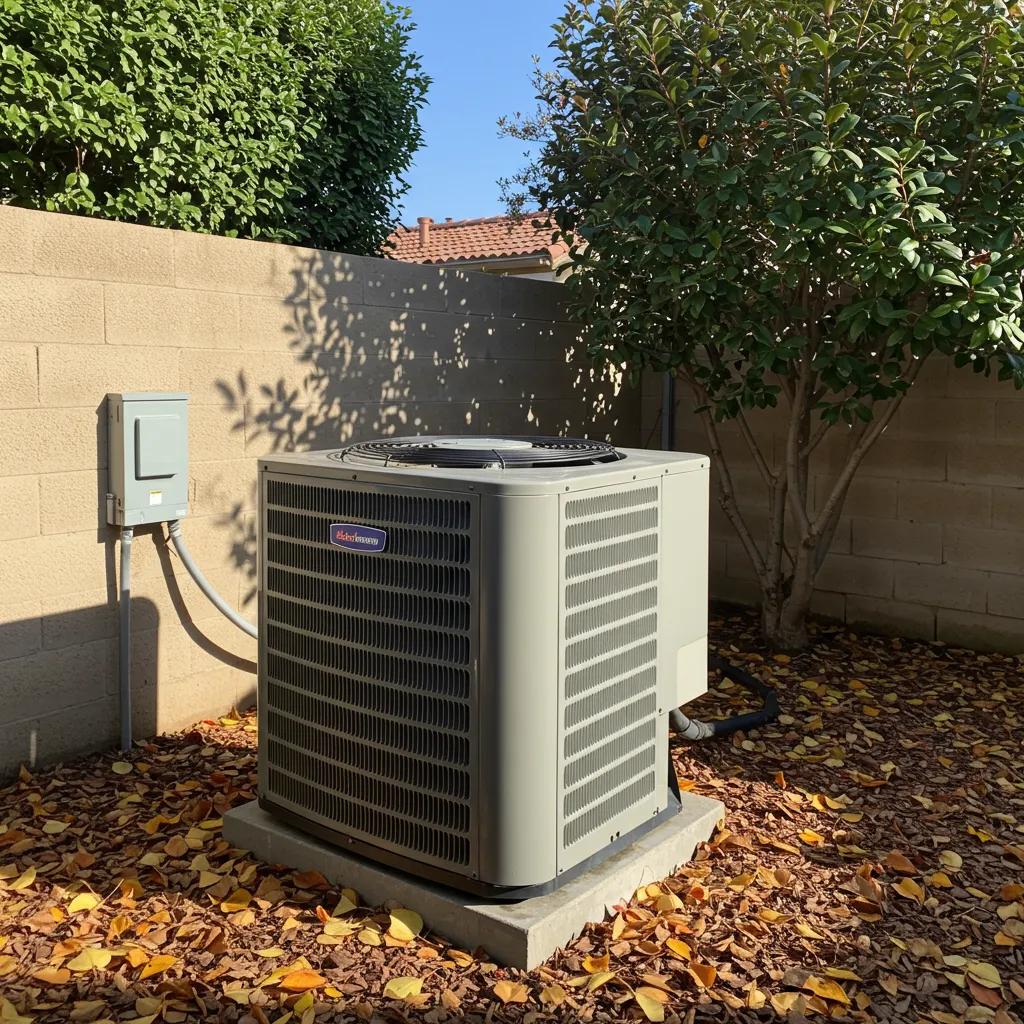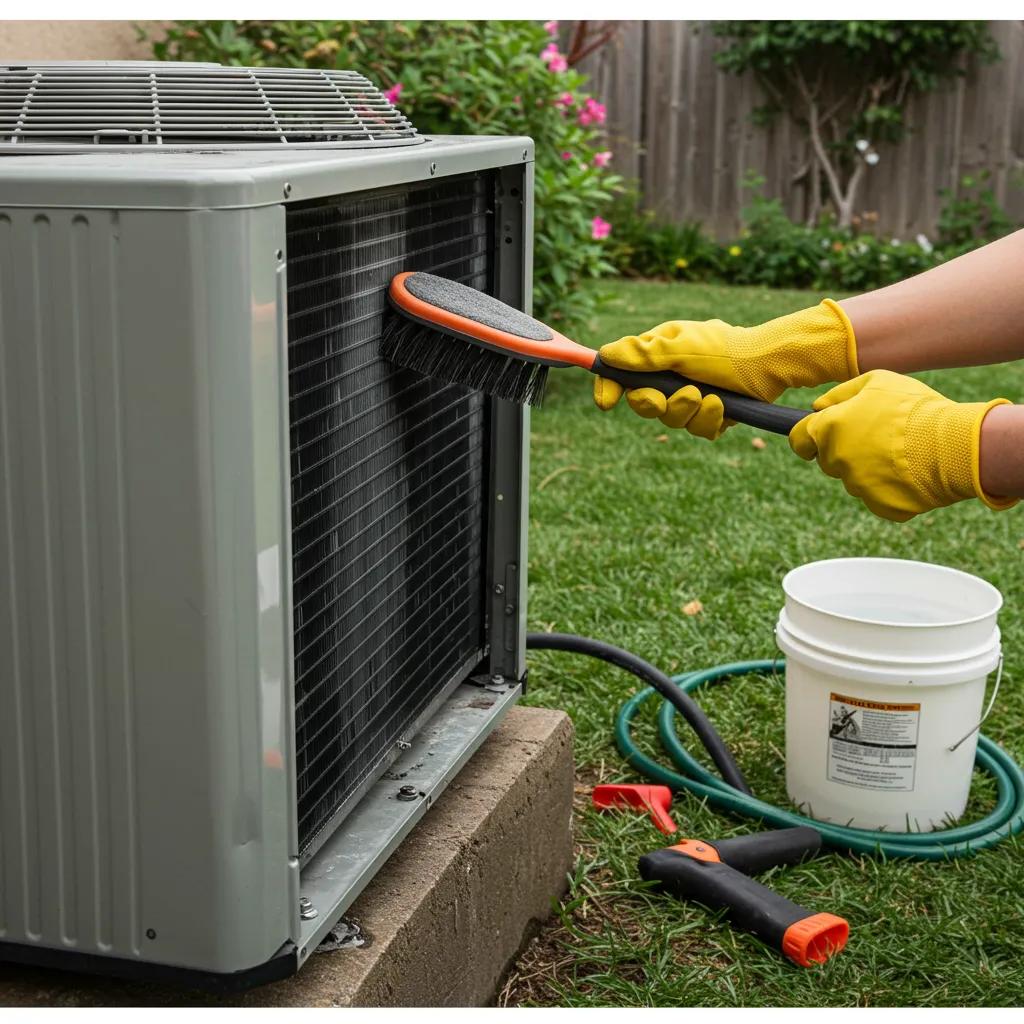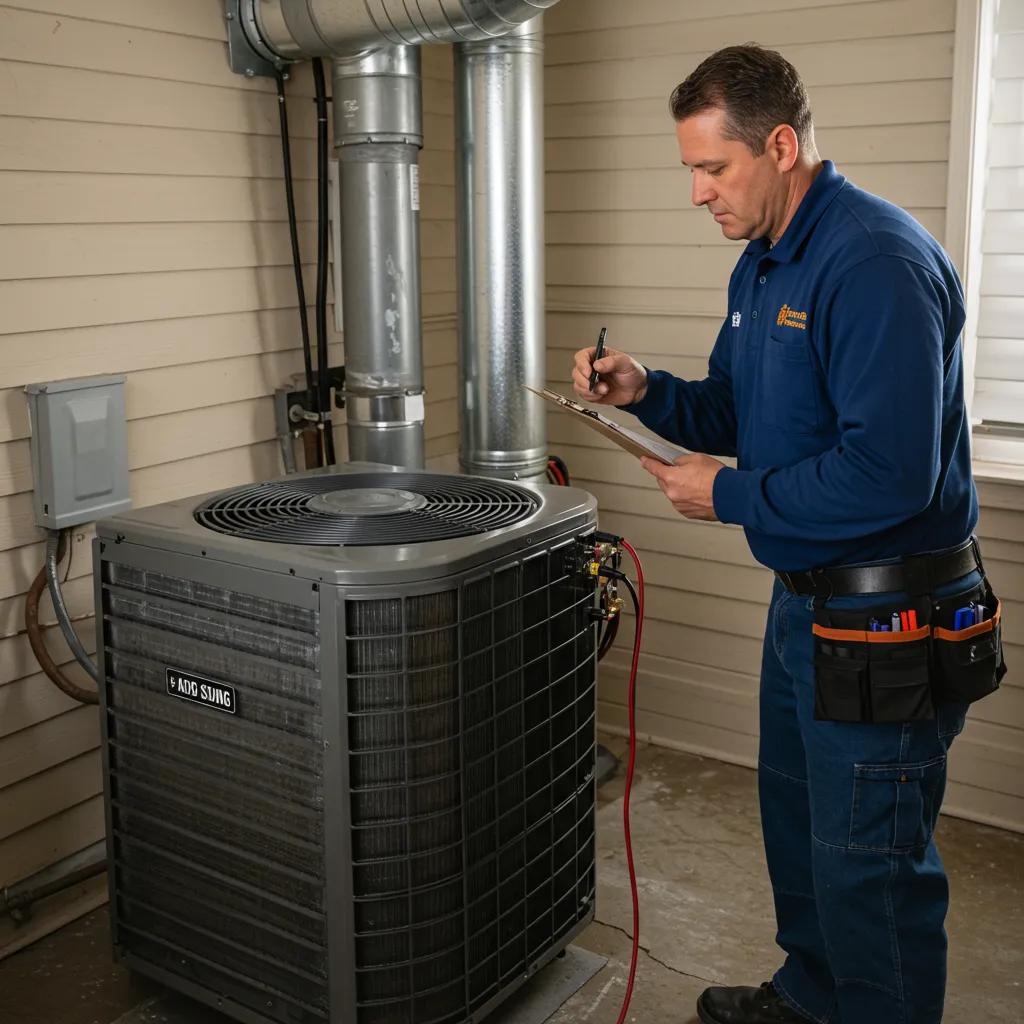
Your Complete Guide to AC Winterisation: Preparing Your Air Conditioner for San Diego Winters
Even San Diego’s mild winters can leave your air conditioning equipment vulnerable to moisture, corrosion, and pests if left unprotected. Properly preparing your AC for the cooler months involves cleaning components, insulating exposed pipes, and applying targeted protection to extend your system’s life and prevent unexpected repair bills. This guide will walk you through why winterising your AC unit is crucial for our local climate, outline essential DIY steps, discuss the role of outdoor covers, detail when to call in the pros for tune-ups, and show how this preparation boosts energy efficiency and savings. You’ll also discover strategies to ward off rust, deter rodents, preserve insulation, and schedule maintenance for optimal performance. By following these proven methods, homeowners and commercial property managers can gain peace of mind and safeguard their HVAC investment.
Why Is Preparing Your AC for Winter Essential in San Diego?
While San Diego’s temperate climate means freeze risks are low, it does contribute to condensation buildup around outdoor condensers, which can accelerate corrosion and mould growth. Addressing winterisation needs ensures your system remains in top shape, lowers maintenance expenses, and helps maintain warranty coverage. Precision Air Inc. recommends seasonal checks to catch any hidden damage before the nighttime temperatures consistently dip into the 50s.
Proper winter preparation not only extends your equipment’s lifespan but also ensures optimal airflow when your heating system kicks in. Neglecting fall maintenance often leads to reduced efficiency, higher energy bills, and costly emergency repairs that can disrupt your comfort and budget. Understanding our local climate is the first step toward an effective off-season care plan.
How Does San Diego’s Mild Climate Impact AC Winterisation Needs?
San Diego’s coastal humidity can cause moisture to linger on coils and electrical contacts, leading to early-stage corrosion. For outdoor units, salt-laden air can accelerate metal degradation, making targeted cleaning and protective coatings essential. Condenser fins clogged with debris also trap moisture and restrict airflow, hindering the system’s readiness for spring startup.
This climate calls for a focus on drying surfaces and ensuring clear airflow paths throughout the winter. By removing organic buildup and applying a light protective spray, you can maintain condenser efficiency and prevent structural deterioration. These measures lay the groundwork for smooth seasonal transitions and help avoid unexpected service calls.
What Are the Advantages of Proper AC Winter Preparation?
Proper winterisation enhances reliability, extends your unit’s lifespan, and can reduce operational costs by up to 30 percent over time. Cleaning coils, tightening electrical connections, and insulating pipes prevent minor issues from becoming major problems. Knowing your HVAC system is systematically protected against moisture and pests brings invaluable peace of mind.
Preventative winter care also helps maintain manufacturer warranties and preserves the resale value of both residential and commercial properties. Systems that undergo professional tune-ups typically demonstrate higher energy ratings and experience fewer breakdowns. This proactive approach establishes baseline performance metrics that simplify spring commissioning and optimise indoor comfort.
What Risks Do AC Units Face Without Winterisation?
Skipping fall maintenance can expose wiring to rust, invite rodents to nest in sheltered areas, and allow stagnant water to foster microbial growth. Unchecked metal corrosion can lead to refrigerant leaks, while electrical faults increase the risk of fire. Poor insulation around pipes can cause thermal loss and create condensation pockets that degrade structural components.
These issues often only surface when heating or cooling demand spikes, leading to emergency service calls and extended downtime. Prevention through winterisation bypasses these risks by addressing vulnerable components before damage occurs. Effective off-season protocols protect both your equipment and building occupants from avoidable hazards.
What Are the Essential DIY Steps to Prepare Your AC for Winter?

Maintaining your AC equipment involves a series of straightforward, safe actions that property owners can complete in an afternoon. The following steps outline a comprehensive off-season checklist, covering outdoor cleaning, system shutdown, filter replacement, and window unit storage. These measures reduce strain on core components and help maintain warranty compliance.
- Clean the outdoor condenser to remove dust, leaves, and salt residue.
- Safely shut down your central AC by following the manufacturer’s shutdown procedures.
- Replace or clean air filters to ensure efficient off-season airflow.
- Remove portable or window units for thorough cleaning and indoor storage.
- Inspect and insulate exposed refrigerant lines to prevent thermal loss.
Completing these tasks establishes a solid foundation for winter protection and readies your systems for spring commissioning. Detailed instructions follow to ensure each step delivers maximum benefit and promotes lasting equipment health.
How Do You Clean Your Outdoor AC Unit for Winter?
Begin by turning off the power at the breaker and wearing protective gloves to avoid sharp edges. Use a soft brush or a low-pressure water spray to dislodge dirt and salt deposits from the condenser fins and coils. Gently straighten any bent fins with a fin comb to restore airflow and reduce strain on the compressor.
After clearing debris, apply a light coating of a corrosion-resistant spray specifically designed for HVAC applications. This protective layer helps inhibit rust caused by coastal humidity and soil salts. Cleaning and coating now prevents deterioration that could lead to refrigerant leaks or inefficient cooling in the following season.
When and How Should You Shut Down Your Central AC for Winter?
Shutting down your central AC involves cutting power and setting the thermostat to “off” mode once temperatures consistently remain below the system’s operating thresholds. Flip the dedicated breaker or switch off the disconnect at the outdoor unit. Remove the thermostat batteries to prevent corrosion on the contact points.
Sealing registers and covering external vents with breathable caps helps stop drafts and minimizes dust infiltration. This procedure reduces energy waste in unused portions of your ductwork and helps preserve indoor air quality. Proper shutdown protocols also protect control boards and compressors from off-season wear.
How and Why Should You Change AC Filters Before Winter?
Replacing filters before winter removes accumulated dust, pollen, and microbial residues that can degrade indoor air quality. Fresh filters support unobstructed airflow through the evaporator coils, preventing moisture buildup and the risk of freezing. Choose filters rated MERV 8 or higher to capture fine particles and reduce allergic triggers for occupants.
Regular filter changes also decrease energy consumption by up to 15 percent by reducing the blower motor’s workload. Installing a filter gauge allows for easy monitoring of air resistance and signals when further changes are needed. Filter maintenance is a low-cost action that significantly enhances system longevity and performance.
What Are the Best Practices for Storing Window AC Units During Winter?
After disconnecting power and safely removing window units, thoroughly clean the casings, coils, and drain pans with mild detergent and water. Allow all components to dry completely in a shaded area to prevent mould growth. Wrap units in breathable fabric covers or heavy-duty blankets and store them in an elevated, dry location to avoid rodent damage.
Labeling each unit with its room designation simplifies reinstallation in the spring. Avoid storing units in plastic bags, as trapped moisture can accelerate corrosion and mould. Proper cleaning and storage methods ensure your window AC units return to service without hidden damage or performance loss.
Should You Use an Outdoor AC Unit Winter Cover in San Diego?
Yes, selectively using an AC cover can protect outdoor condensers from falling debris and some pests, but the choice of cover material and proper installation are critical. Lightweight, breathable top-only covers balance moisture evacuation with debris exclusion, while full plastic enclosures risk trapping condensation and promoting mould. Evaluating the pros and cons ensures optimal protection without unintended consequences.
What Are the Pros and Cons of Using AC Covers in Mild Climates?
Before selecting a cover, consider local humidity levels, debris sources, and pest pressure to weigh the cover’s performance against the risk of moisture buildup. The table below compares common cover options, helping you choose the right balance of protection and breathability.
| Cover Type | Protective Benefit | Potential Drawback |
|---|---|---|
| Breathable Top Shield | Blocks leaves, allows moisture release | May not stop small rodents |
| Vinyl Full Enclosure | Complete debris exclusion | Traps condensation, promotes mould |
| Custom-Fit Hard Shell | Durable impact protection | Limits airflow, high cost |
Which Types of AC Covers Are Best for San Diego’s Climate?
Breathable polyester covers with elastic hems secure over the top of condensers and shed leaves without obstructing vents. These covers resist UV degradation and microbial growth. For properties near trees or exposed to heavy salt air, reinforced canvas designs offer extra tear resistance and moisture wicking.
Choosing a cover rated for outdoor HVAC equipment ensures fabric durability and a proper fit. A snug top-only design complements fall cleaning and spray-on corrosion inhibitors already applied during winterisation. This lightweight approach simplifies removal before spring commissioning.
How Can AC Covers Help Prevent Moisture and Pest Damage?
A well-fitted top shield protects coils from organic debris that holds moisture against metal surfaces, significantly reducing corrosion potential. Protective mesh patterns deter birds and larger rodents while still allowing residual moisture to evaporate naturally. Combining cover use with pipe insulation and sealing gaps around the base creates a comprehensive pest deterrent.
These measures integrate smoothly with professional maintenance plans and DIY routines to form a unified barrier against off-season damage. Proper cover choice and installation reinforce other winterisation steps, delivering durable protection until spring activation.
When and Why Should You Hire Professional AC Winter Maintenance Services in San Diego?

Engaging certified HVAC specialists ensures thorough diagnostics, precise refrigerant checks, and safe handling of component wear points that DIY routines might miss. A comprehensive tune-up uncovers hidden leaks, performance drifts, and control irregularities, restoring factory-specified efficiency and reliability. Professional winterisation also includes instrument-verified air conditioning tune-up and electrical safety inspections.
Property managers benefit from service contracts that provide scheduled fall visits, priority emergency support, and discounted parts. Precision Air Inc.’s Winter Tune-Up Package bundles cleaning, lubrication, leak testing, and thermostat calibration into a single appointment designed for San Diego conditions. Expert intervention guarantees that all winterisation measures align with manufacturer recommendations and local climate demands.
What Are the Benefits of a Professional AC Winter Tune-Up?
A professional tune-up can reduce system breakdown risk by up to 95 percent and improve seasonal energy efficiency by 10 to 15 percent. Technicians use advanced diagnostic tools to measure refrigerant pressures, detect microleaks, and verify electrical integrity. Precision adjustments to blower motors and refrigerant charge restore peak cooling capacity and prevent undue compressor wear.
These services include detailed reports on equipment condition, enabling informed decisions about repairs or upgrades before risks escalate. Securing a winter-focused maintenance visit assures seamless performance when warmer weather returns, preserving comfort without unexpected downtime.
How Do HVAC Winter Service Contracts Work in San Diego?
Service contracts typically include scheduled autumn inspections, two preventive visits per year, and discounted repair rates on labour and parts. Subscribers receive priority scheduling, annual performance reports, and system health audits. Contracts can be customised for residential units or scaled for multi-system commercial complexes, offering predictable budgeting and ongoing peace of mind.
By enrolling in a contract early in the fall, property owners can secure preferred service windows and receive automatic reminders for filter changes and tune-ups. This structured approach simplifies maintenance planning and safeguards against peak-season appointment bottlenecks.
What Special Considerations Are There for Commercial AC Winterisation?
Commercial HVAC systems involve rooftop units, variable-air-volume controllers, and complex duct networks that require specialised calibration. Large-scale condensers need lift-access cleaning, refrigerant leak surveys, and coil-pressure tests beyond the typical DIY scope. Commercial contracts often feature 24/7 monitoring, emergency response guarantees, and integrated energy-management reviews.
Professional teams coordinate with facility managers to minimise operational disruptions and comply with local safety regulations. Tailored winterisation ensures that business-critical environments maintain optimal climate control while extending equipment service life and avoiding costly production downtime.
How Can You Prevent Common Winter Damage to Your AC Unit?
Protecting an AC unit through fall and winter requires targeted strategies for corrosion prevention, pest deterrence, and insulation maintenance. Coordinated application of cleaning, coatings, and barriers addresses specific threats to metal, wiring, and refrigerant lines. This proactive approach minimises repair frequency and safeguards performance continuity.
Below is an ordered list of key damage prevention tactics to incorporate into every winterisation plan:
- Inspect and clean condenser coils, then apply a thin-film corrosion inhibitor to exposed metal surfaces.
- Seal gaps and apply rodent-resistant mesh around unit bases to deter nesting wildlife.
- Wrap refrigerant lines with closed-cell foam insulation and secure with UV-stable tape.
What Are Effective Ways to Prevent Rust and Corrosion on AC Units?
Rust forms when metal is exposed to moisture and contaminants without protection. Applying a light, colorless corrosion inhibitor after cleaning shields coil fins, brackets, and fasteners without affecting heat exchange. Reapplying this barrier annually counters the effects of salt air near the coast.
Coupling inhibitors with periodic inspections for chipped paint or surface pitting ensures early correction before damage penetrates deeper. This maintains pressure integrity in refrigerant circuits and preserves warranty compliance.
How Do You Deter Rodents and Pests from Outdoor AC Units?
Rodents seek warmth and shelter under condenser housings, where they may gnaw on wiring or nest in ducts. Installing galvanized metal screens and sealing vents with hardware cloth prevents intrusion without impeding airflow. Ultrasonic repellents and scented deterrents supplement physical barriers by discouraging nesting behavior.
Regularly clearing away leaves and grass clippings removes cover that attracts small mammals. A maintenance routine combining cleaning, screening, and repellents creates a multi-layered defense that effectively reduces service calls for pest-related damage.
How Should You Protect AC Pipes and Insulation During Winter?
Exposed refrigerant lines and drain pipes require closed-cell foam insulation sleeves secured by UV-resistant tape to prevent thermal loss and water condensation. Sleeves rated for outdoor HVAC use resist cracking and repel moisture ingress. Inspect insulation annually for tears or compression that can expose metal or rubber components. For more issues, you can check common air conditioning problems.
Maintaining tight insulation preserves refrigerant efficiency by minimising temperature differential losses. Properly protected pipes support consistent system performance and extend component longevity, forming an integral part of winterisation protocols.
What Are the Cost and Energy Efficiency Benefits of AC Winterisation in San Diego?
Investing in fall HVAC care yields measurable savings through reduced repair bills, lower power consumption, and extended equipment service life. Seasonal maintenance can decrease total lifecycle costs by up to 20 percent and cut peak-season energy use by 10 to 15 percent. These improvements translate directly to operating budgets and occupant satisfaction.
Engaging in winterisation also provides data on system performance that informs retrofit or upgrade decisions, enabling property owners to capitalise on rebate programs and tax incentives for energy-efficient equipment. Calculated scheduling of tune-ups before peak summer demand further optimises resource allocation and workload distribution for service providers.
How Does Winter Maintenance Reduce Repair Costs and Extend AC Lifespan?
Professional inspections uncover early-stage refrigerant leaks, mechanical wear, and electrical anomalies that DIY routines might miss. Addressing these issues before they worsen lowers part replacement frequency and averts compressor failures, the most expensive repair in HVAC systems. Consistent upkeep can extend useful life from 10–12 years to 15–18 years in Southern California conditions.
Detailed performance reports guide reinvestment planning and justify preventative care budgets by comparing actual maintenance costs against emergency repair expenses. This strategic approach improves asset management and protects capital investments.
How Does Proper Winterisation Improve Energy Efficiency?
Cleaning coils and replacing filters ensure heat exchange surfaces operate at peak capacity, reducing compressor run time and lowering energy draw. Tightening electrical connections and calibrating thermostats also prevent voltage irregularities that waste power. Together, these measures can enhance Seasonal Energy Efficiency Ratio (SEER) ratings by up to one point, delivering noticeable cost savings on utility bills.
Energy-performance data collected during tune-ups highlights opportunities for programmable thermostat integration, zoning controls, and variable-speed fan upgrades that further reduce consumption. Winterisation thus becomes a catalyst for broader efficiency improvements.
When Is the Best Time to Schedule AC Winterisation Services in San Diego?
Booking inspections and tune-ups in October or early November balances system downtime with optimal weather windows, avoiding the summer rush and ensuring technicians can complete thorough services. Fall scheduling also aligns with coastal humidity peaks, addressing corrosion risk at the ideal moment. Commercial clients benefit from off-peak appointment availability, reducing disruption to operations.
Securing service windows early allows for customised planning, inventory checks for parts, and efficient crew deployment. Advance scheduling delivers predictable maintenance timelines and maximises return on preventative care investments.
What Are the Most Common Questions About Preparing Your AC for Winter?
Addressing typical concerns clarifies winterisation steps and reinforces confidence in off-season maintenance plans. The questions below reflect topics homeowners and property managers frequently explore when winterising AC equipment in San Diego’s mild climate.
Should I Cover My AC Unit in Winter?
Yes, a breathable top-only cover blocks debris while allowing trapped moisture to evaporate, preventing corrosion without promoting mould. Full plastic covers risk condensation accumulation, so select a fabric design rated for HVAC applications.
How Do I Prepare My Central Air Conditioner for Winter?
Clean outdoor coils, shut down power at the breaker, remove thermostat batteries, replace filters, and insulate exposed pipes. Sealing registers and vents minimises dust entry and preserves ductwork integrity until spring activation.
What Happens If I Don’t Winterise My AC?
Unprotected units suffer accelerated rust, refrigerant leaks, and pest damage that lead to costly breakdowns. Electrical faults and coil corrosion undermine performance, often requiring emergency service calls and significant repairs.
How Do I Store a Window AC Unit for Winter?
After power removal, wash coils, panels, and drain pans with mild detergent, let all parts air-dry, then wrap in a breathable cover and store off-ground in a dry, rodent-free area. Proper storage prevents mould growth and preserves component health.
When Should I Winterise My AC in San Diego?
Plan winterisation between October and early November when nightly lows encourage shutdown but before heavy rainfall and humidity peaks. Early scheduling ensures full service availability and optimal protection timing.
Keeping this thorough preparation routine helps ensure reliable and efficient HVAC performance all year. For expert assistance, consider scheduling a professional tune-up with Precision Air Inc. to make sure your system gets top-quality care and expertise. Book your appointment today to enjoy personalized preventive maintenance and the peace of mind that only professional service can provide.


